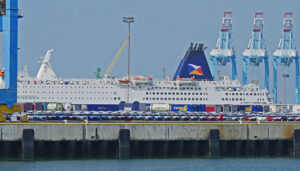If you’re considering importing a car to Zambia, you’re making a practical decision. Zambia has a growing demand for used vehicles, and importing from countries like Japan, the UK, and South Africa offers access to high-quality cars at lower prices. However, understanding the process and legal requirements is essential to avoid delays and extra costs. In this guide, we’ll break down everything you need to know about importing a car into Zambia, from selecting the right vehicle to completing customs clearance.
Step 1: Choose the Right Car for Zambia
When choosing a car to import, it’s important to pick a vehicle that meets Zambian road conditions and personal needs. Some factors to consider include:
- Durability: Opt for a model that’s reliable on both city roads and rural areas, where the terrain might be rough.
- Fuel efficiency: With rising fuel costs, it’s advisable to choose a car that is fuel-efficient.
- Spare parts availability: Make sure that spare parts for your chosen car are easily available in Zambia.
Popular cars imported into Zambia include Toyota Hiace, Toyota Harrier, and Nissan X-Trail, which are well-suited for local driving conditions.
Step 2: Check Vehicle Import Regulations
Before importing a car, it’s crucial to understand Zambia’s import regulations. Here are the key requirements:
- Vehicle Age Limit: Zambia has no specific age limit for imported cars, but vehicles older than five years are subject to a surtax.
- Pre-Shipment Inspection: All vehicles imported into Zambia must undergo inspection by a certified body, such as JEVIC (Japan Export Vehicle Inspection Centre) or Bureau Veritas. This ensures that the vehicle meets safety and environmental standards.
- Registration Documents: You’ll need original registration documents from the country of origin.
Step 3: Purchase and Ship Your Vehicle
Once you’ve chosen the vehicle, it’s time to purchase and arrange shipment. You can either buy from a reputable used car dealer or participate in online auctions. Many importers choose to buy cars from Japan due to the reliability and low cost.
Shipping Options:
- RORO (Roll-On/Roll-Off): This is the most affordable shipping method, where the vehicle is driven directly onto a ship and secured for the journey.
- Container Shipping: If you want extra protection for your vehicle, container shipping offers more security but at a higher cost.
The major shipping ports for Zambia-bound vehicles are Dar es Salaam (Tanzania) and Durban (South Africa). From there, your car will be transported overland to Zambia.
Step 4: Calculate Import Duties and Taxes
One of the most important steps in the car import process is paying the necessary duties and taxes. Zambia has specific customs duties that vary based on the type and value of the car. Here’s a breakdown of the charges you can expect:
- Customs Duty: Usually between 25% and 30% of the car’s CIF (Cost, Insurance, Freight) value.
- Excise Duty: Cars with larger engine sizes (over 1,500cc) will incur an excise duty, which can range from 15% to 30%.
- Value Added Tax (VAT): A flat 16% is applied on the CIF value plus customs and excise duties.
- Surtax: Vehicles older than five years are subject to an additional 20% surtax on their value.
You can calculate these fees using the Zambia Revenue Authority (ZRA)‘s online customs duty calculator.
Step 5: Customs Clearance and Registration
Once your car arrives at the port, it will go through the customs clearance process. You will need the following documents:
- Bill of lading (issued by the shipping company)
- Invoice or proof of purchase
- Pre-shipment inspection certificate
- Original vehicle registration papers
- Your passport or national ID
After clearing customs, your car can be transported to Zambia. You must then register the vehicle with the Road Transport and Safety Agency (RTSA) and obtain local number plates.
Step 6: Vehicle Insurance
Before driving your newly imported car on Zambian roads, you’ll need to obtain motor vehicle insurance. Zambia requires all vehicles to be insured for third-party risks at a minimum. Comprehensive coverage is recommended, especially if you plan to drive long distances or in challenging road conditions.
Common Mistakes to Avoid
- Neglecting pre-shipment inspection: This can result in delays at customs or, worse, the rejection of your vehicle.
- Underestimating import duties: Many importers fail to accurately calculate the duties and end up paying more than expected.
- Choosing unreliable dealers: Always check for reviews and ensure that you’re buying from a reputable source to avoid scams.
Final Thoughts
Importing a car into Zambia is a straightforward process if you follow the steps outlined in this guide. From choosing the right vehicle to understanding the import duties, each step requires careful attention. By preparing all necessary documents and working with trusted dealers, you can make the process smooth and cost-effective.
If you’re ready to import a car, make sure to consult with professionals for up-to-date advice and explore options that match your budget and needs. Whether you’re looking for a durable vehicle for rough terrain or a city-friendly car, importing could be your best option.
Disclaimer: The information provided in this article is for informational purposes only and may change over time. Tax laws and regulations are subject to frequent updates. It is strongly recommended to always check the latest and official information on the website of the zambian revenue authority before taking any action. Ensure you obtain professional advice tailored to your specific situation.



